The episode of Revisited covering The Babadook was Written, Edited, and Narrated by Kier Gomes, Produced by Tyler Nichols and John Fallon, and Executive Produced by Berge Garabedian.
As we all know, horror films come in many forms and there are many sub-genres within horror that make it both easily accessible and appealing to just about everyone. Whether you’re looking for demon possessions, ghosts, ghouls, haunted houses, or you’ve just got an insatiable appetite for corn syrup- the horror genre has something for you. And as such, the subject of today’s video is the debut feature from Jennifer Kent that plays in the sandbox of the paranormal, while highlighting the idea that the REAL fear- is fear itself. The Babadook (watch it HERE) is a 2014 psychological horror film that follows a widowed single-mother and her troubled young son. The movie definitely feels confident in its approach to such a profound story, and Jennifer Kent started on the screenplay in 2009 with the idea of exploring grief, and the fear of losing your grip on reality. It’s one of those movies that plays hard into the “fear is in what you don’t see” device that shrouds most of the scenes in crisp, vast darkness. This of course is likely partially related to the movie’s limited budget, but in general it’s highly effective.
Amelia is a middle-class single mom whose six-year-old son doesn’t sleep- and by extension, neither does she. Amelia’s husband has been dead since the day their son was born when he was killed in a car crash on the way to the hospital. The grief of this family is heavy from the very beginning as we see Sam displaying disturbing and manic behavior, and Amelia struggling to keep her life together as her reputation, her work life, and her home life are falling to pieces around her. The roles of our main characters are played by Essie Davis as Amelia and Noah Wiseman as Sam. The performances of these two in particular are really solid in this movie. They’ve of course received a respectable level of critical acclaim and one of the biggest positives within this film is the relentless drama and believable acting on display from these two Australian players.
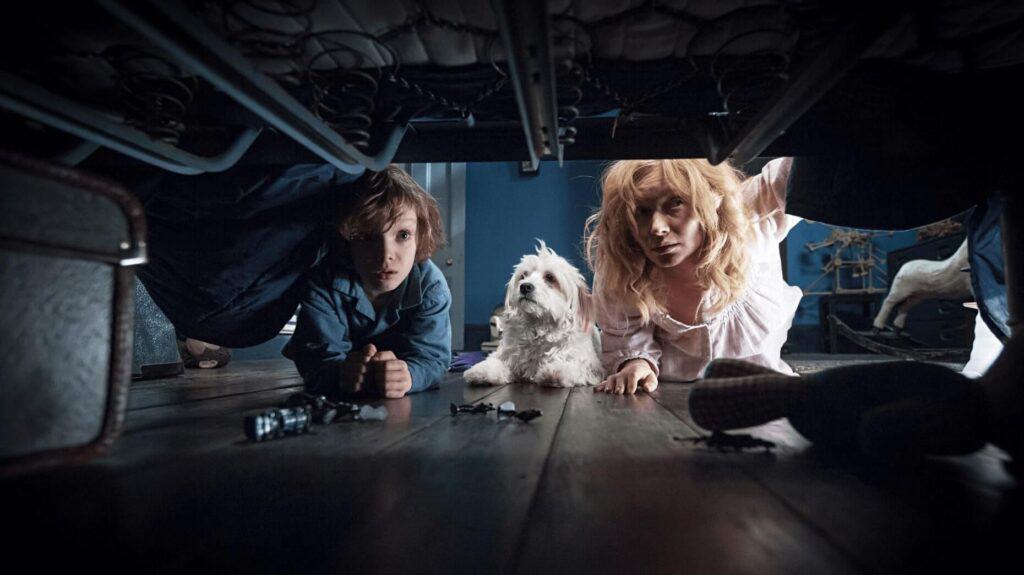
When Sam finds a children’s book in his room called “Mister Babadook”, his mom reads it to him in hopes to get him to fall asleep. Within the book are a series of spooky rhymes and even spookier illustrations that allude to the horrible happenings that this family are in for. This includes things like Sam going into a full hallucinogenic fit, breaking his cousin’s nose, and multiple social related issues. The movie really takes its time getting to the “monster” of the movie- and when we do finally get to it- there’s hardly any time spent fleshing out the creature. HOWEVER, this is only half true- See, the movie makes it pretty clear that the Babadook is a physical manifestation of Amelia’s grief, anxiety, and fear. So, by spending most of the film’s brisk 94-minute runtime on Amelia’s day to day state- the movie IS explaining the monster- Mister Babadook is her inner struggle. This is also supported by the film’s highly memorable ending but… we’ll get to that.
The character of Sam also deserves some praise. Not only is Noah Wiseman’s performance very good, but the character is also extremely well written. Sam isn’t necessarily a bad kid- if anything, we really just feel bad for him throughout the film. He’s got the youthful naivete of a six-year-old which makes him seem like at his core, and past his many psychological issues, he’s a good kid. Sam loves magic and is constantly practicing his sleight of hand which on its own adds a wonderful layer to contrast his fits and tantrums. At first, Amelia doesn’t believe Sam when he blames the Babadook for his erratic behavior, and she even goes as far as to get prescription tranquilizers from the doctor to force Sam into a good night’s sleep. This is both good for Sam, and good for Amelia as she finally has a chance to rest. At about the halfway point, Amelia begins to realize that the children’s book that she read Sam about the Babadook seems to have a mind of its own. Amelia can no longer ignore that the strange events happening around her and Sam can’t all be explained by Sam’s mental issues. And that there is likely something much more threatening looming over them.
In classic horror fashion, we do get a. few attempts from Amelia to destroy the book- thinking that if the book is gone, the haunting will stop. But of course, if she hides the book, it gets found. If she tears it up and throws it in the trash, it shows up at her door taped back together, if she burns it… well, then congratulations lady you destroyed the only thing the police need to see in order to help you. Nice.
There’s a lot of little moments in this movie that make it particularly chilling on a rewatch. For example, when you know what to look for, you’ll find yourself investigating each frame looking for clues to either validate your theories or spot the creepy man in black lurking in the shadows. In particular, the scene where Amelia is watching an old TV show late at night and begins seeing images of the Babadook on her tv screen. The scene is so intense because watching TV late at night is a normal ritual for Amelia. A few times throughout the film this is where Amelia gets her… “Me time”, but when we see it in this scene, it shows how much the influence of the Babadook has grown in her life. This may be a stretch, but it seems like this scene is what makes Amelia realize that there is nowhere to hide. It’s like the negative thoughts, the fear, the grief, the sadness, whatever- has infected the only space that she can escape to when life gets to be too much. It’s pretty interesting and I love it.
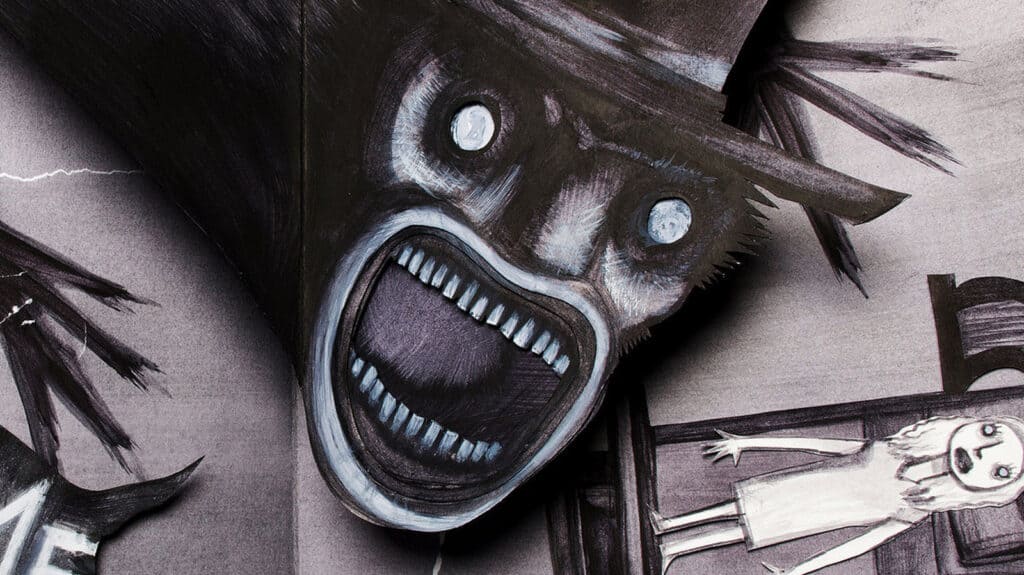
So, now that Amelia is fully convinced that the monster in her home is real, it’s all a matter of figuring out what it wants, and how to get rid of it. Well… Sort of.
It’s established earlier in the movie via one of the nursery rhymes that there is no getting rid of the Babadook once you’ve seen him. Similar to many monsters throughout the horror genre, the Babadook feeds on fear and belief in its existence. And seeing as we’ve spent the entire movie waiting to see this thing, I think it’s time to talk about the character design of the Babadook.
The character is quite chilling and much like the boogeyman, it works much better when it’s hidden in the shadows. See, I think the silhouette of the Babadook is terrifying. The hunched shoulders and long fingers and the wide eyes and smile… it’s very scary. When he comes more into the light, or is seen on the TV show, he looks a little less creepy, but I think that’s kind of the point. If we’re sticking with the idea that the Babadook represents fear and anxiety- it would make sense that it’s much scary when it’s obscured than it is when you finally face it. Think of it like the coat on a hanger in your closet that looks like a monster when you see it in the middle of the night, but once your eyes adjust you can see that it’s nothing to be afraid of. I believe that point is driven even further by the design of the character.
However, aesthetically, you’ll find that fans and critics of the film praised the eerie, minimal design of the monster and the creative way of framing him to be much larger and imposing than he really is.
Amelia ends up getting possessed by the Babadook at the last minute when she’s trying to protect Sam, and this is REALLY where Essie gets a chance to chew the scenery. She basically let’s her fear get the best of her, and she unloads all of her inner struggles onto her young son in a fit of true motherly scorn. It almost made ME piss myself.
Sam has to act quickly if he wants to save himself, and his mom. He sets up a few booby-traps around the house Kevin McCallister style and even uses some of his nifty magic skills to subdue the Babadook and exercise his mom. For some, the movie could have ended there. It would’ve been a fine ending with Amelia overcoming her inner demons and Sam finally being able to settle into a normal, healthy mindset. However… Remember when I said that you can’t get rid of the Babadook? Well, it’s true. Just like the pain in our own lives, it can never really go away, but we can learn to live with it. This is the literal ending to the movie as we see that Amelia is keeping the Babadook in her basement and feeding it worms to keep it from getting out of control. This, to me, reads as the true happy ending. Amelia didn’t fully conquer her issues, that just wouldn’t be realistic. She instead learned to keep it in check and force it to co-exist with the happier things in her life.
Overall, The Babadook is genuinely an original take on a very real fear that most adults have. It shows that even when everything in your life is broken, you can still find a way to rebuild if you face what brings you down. Check it out, if you haven’t yet.
Two previous episodes of Revisited can be seen below. To see more of our shows, head over to the JoBlo Horror Originals channel – and subscribe while you’re at it!










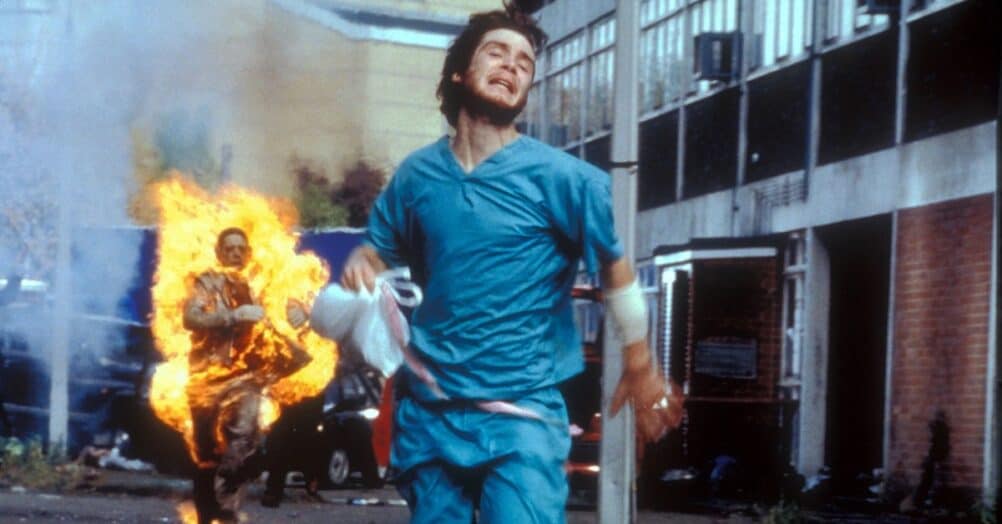





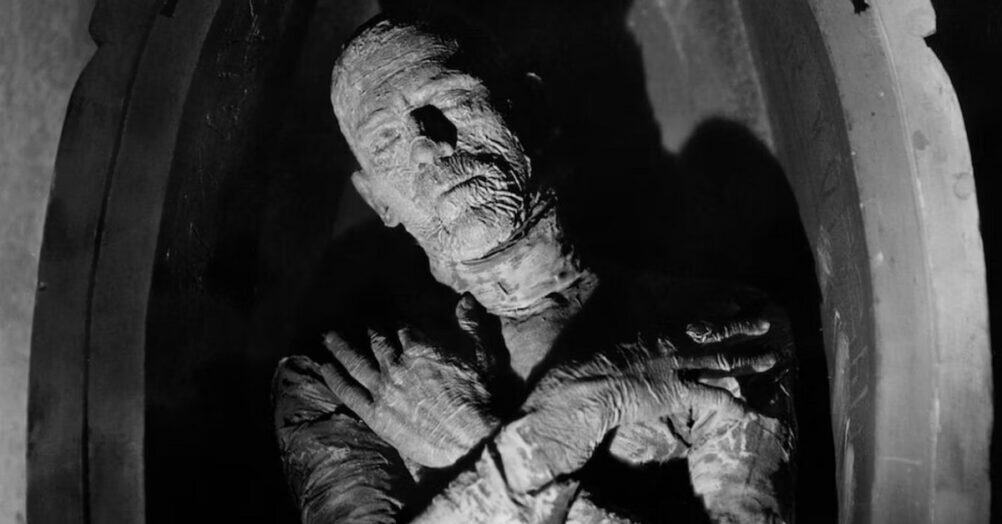
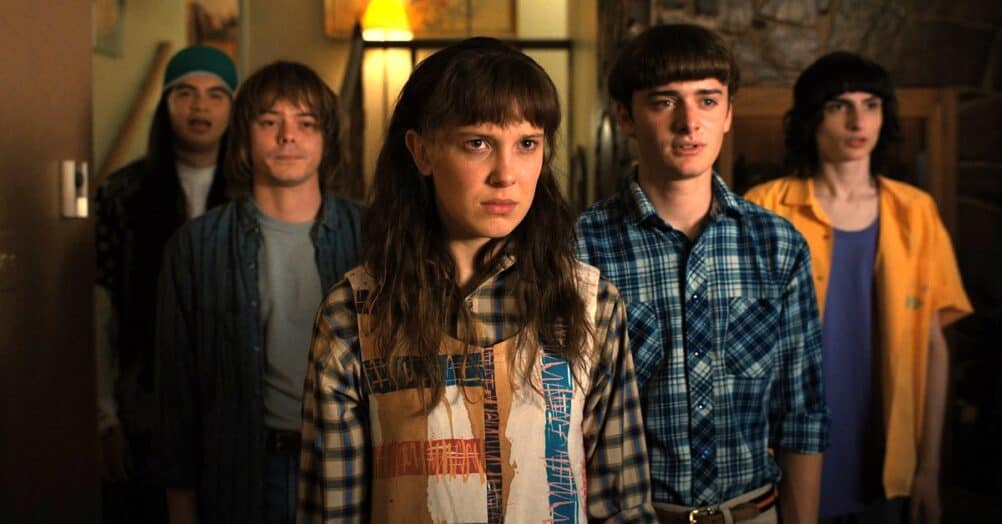

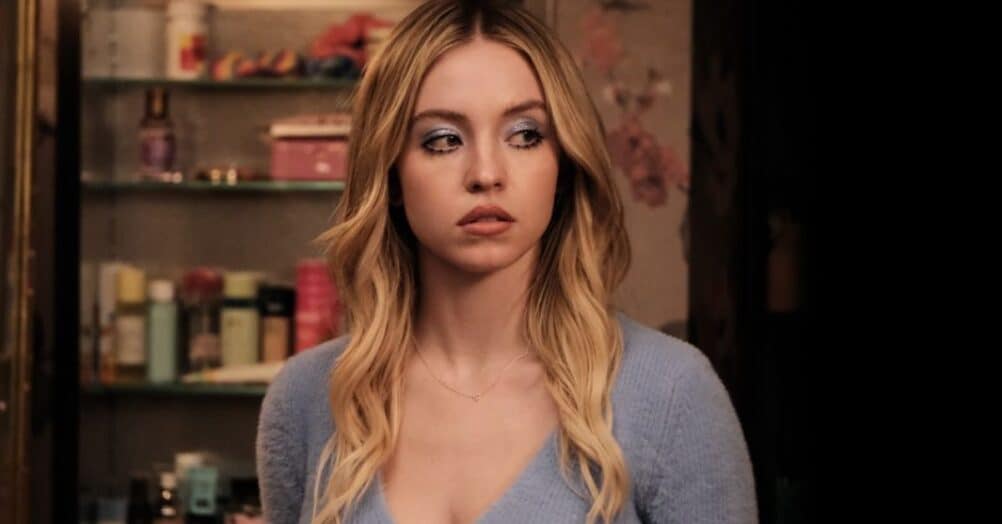
Follow the JOBLO MOVIE NETWORK
Follow us on YOUTUBE
Follow ARROW IN THE HEAD
Follow AITH on YOUTUBE